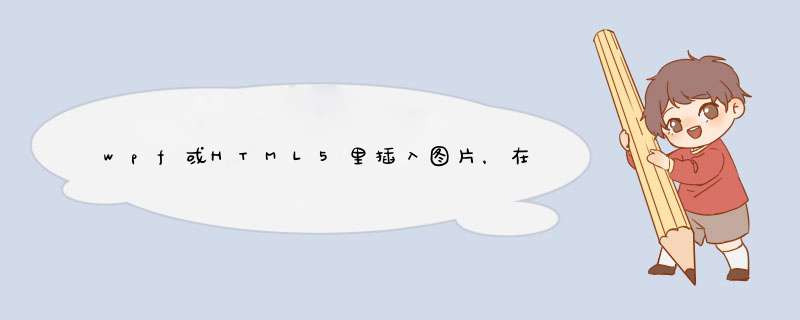
WPF用RenderTransform实现,随便做了个,代码如下。
XAML
<Window x:Class="WpfApplication3.MainWindow"xmlns="
xmlns:x="
title="MainWindow"
Height="350"
Width="525">
<Grid>
<Image Name="image" Source="/WpfApplication3component/Images/Hydrangeas.jpg">
<Image.RenderTransform>
<TransformGroup>
<RotateTransform x:Name="rt"/>
<ScaleTransform x:Name="st"/>
<TranslateTransform x:Name="tt"/>
</TransformGroup>
</Image.RenderTransform>
</Image>
<StackPanel Orientation="Horizontal"
Height="20">
<Button Name="btnScale1"
Content="缩小"
Click="btnScale1_Click" />
<Button Name="btnScale2"
Content="放大"
Click="btnScale2_Click" />
<Button Name="btnRotation1"
Content="左转"
Click="btnRotation1_Click" />
<Button Name="btnRotation2"
Content="右转"
Click="btnRotation2_Click" />
<Button Name="btnMove1"
Content="左移"
Click="btnMove1_Click" />
<Button Name="btnMove2"
Content="右移"
Click="btnMove2_Click" />
<Button Name="btnMove3"
Content="上移"
Click="btnMove3_Click"/>
<Button Name="btnMove4"
Content="下移"
Click="btnMove4_Click" />
</StackPanel>
</Grid>
</Window>
CS如下
namespace WpfApplication3{
/// <summary>
/// MainWindow.xaml 的交互逻辑
/// </summary>
public partial class MainWindow : Window
{
public MainWindow()
{
InitializeComponent()
DataContext = this
}
private bool _ischecked = false
public bool IsChecked
{
get
{
return _ischecked
}
}
private void btnScale1_Click(object sender, RoutedEventArgs e)
{
st.CenterX = image.ActualWidth / 2
st.CenterY = image.ActualHeight / 2
st.ScaleX -= 0.1
st.ScaleY -= 0.1
}
private void btnScale2_Click(object sender, RoutedEventArgs e)
{
st.CenterX = image.ActualWidth / 2
st.CenterY = image.ActualHeight / 2
st.ScaleX += 0.1
st.ScaleY += 0.1
}
private void btnRotation1_Click(object sender, RoutedEventArgs e)
{
rt.CenterX = image.ActualWidth / 2
rt.CenterY = image.ActualHeight / 2
rt.Angle -= 10
}
private void btnRotation2_Click(object sender, RoutedEventArgs e)
{
rt.CenterX = image.ActualWidth / 2
rt.CenterY = image.ActualHeight / 2
rt.Angle += 10
}
private void btnMove1_Click(object sender, RoutedEventArgs e)
{
tt.X -= 10
}
private void btnMove2_Click(object sender, RoutedEventArgs e)
{
tt.X += 10
}
private void btnMove3_Click(object sender, RoutedEventArgs e)
{
tt.Y -= 10
}
private void btnMove4_Click(object sender, RoutedEventArgs e)
{
tt.Y += 10
}
}
}
Click可以变通使用MouseLeftButtonUp事件如果一定要添加Click,需要通过自定义路由事件,然后通过MouseLeftButtonUp方法中触发Click事件
欢迎分享,转载请注明来源:内存溢出

 微信扫一扫
微信扫一扫
 支付宝扫一扫
支付宝扫一扫
评论列表(0条)